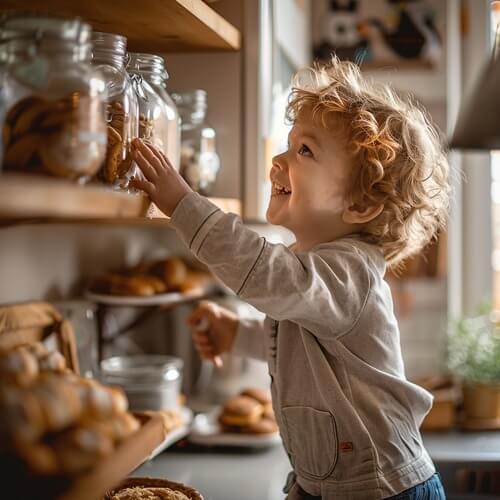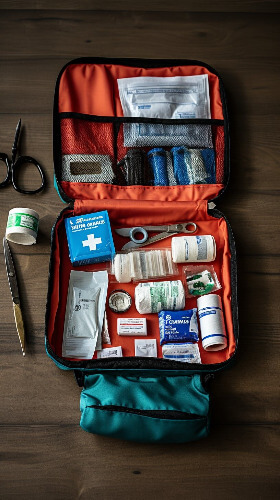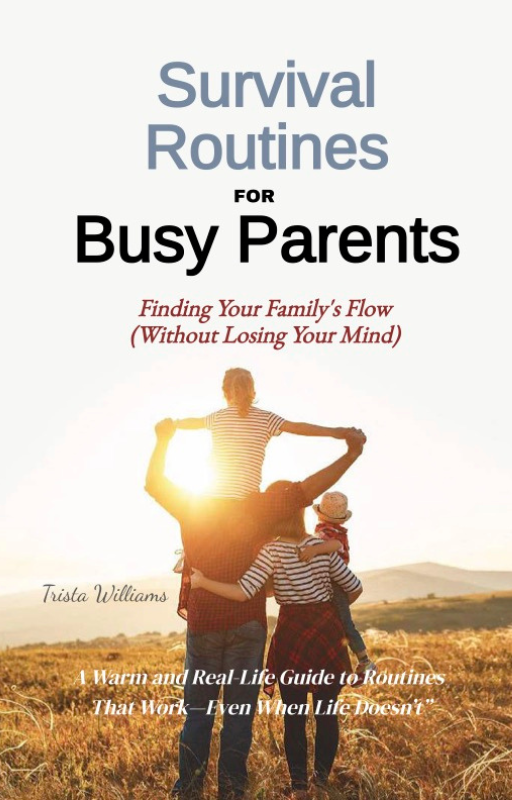Safety Tips for Toddler: Creating a Safe World for Your Little Explorer!
You are likely aware by now how quickly your curious toddlers transform into tiny adventurers—zooming around the house, climbing anything they can reach, and discovering the world one grab at a time.

While their energy is magical, it also means you need to stay one step ahead to keep them safe. Let’s walk through some practical safety tips for toddler that will protect their curiosity while giving you peace of mind.
Creating a Safe Home Environment
Your home is where your toddler spends most of their time, and it should be a place where they can move around safely.
Here are some ways to make sure your home is as toddler-proof as possible:
- Secure Furniture and Appliances – Toddlers love to climb! Make sure bookshelves, dressers, and TVs are securely anchored to prevent tipping.
- Cover Sharp Edges – Use corner protectors on tables and counters to prevent injuries from falls.
- Keep Small Objects Out of Reach – Buttons, coins, and batteries are choking hazards. Store them safely away.
- Install Safety Gates – Block off staircases and unsafe areas to prevent falls and accidents.
- Use Outlet Covers – Little fingers love to explore. Cover electrical outlets to prevent shocks.
Preventing Falls and Injuries
Toddlers are still developing balance and coordination, which means falls are common.
Here’s how to minimize injuries:
- Never Leave Them Unattended on High Surfaces – Whether it's a bed, couch, or changing table, always keep a hand on your child.
- Use Non-Slip Mats – Place these in bathtubs and on slick floors to prevent slipping.
- Teach Safe Climbing – If they love to climb furniture, guide them toward safer climbing alternatives like a toddler-friendly indoor gym.
Water Safety Tips for Toddler
Water can be dangerous, even in small amounts.
Always be cautious around water:
- Never Leave a Toddler Alone in Water – Even a few inches can be a drowning hazard.
- Use Toilet Locks – Curious toddlers may try to explore the toilet.
- Be Extra Careful Around Pools and Bathtubs – Always have a hand on your child and drain tubs immediately after use.

Kitchen Safety
The kitchen is full of hazards for little ones. Here’s how to make it safer:
- Use Stove Knob Covers – Prevent toddlers from turning on burners.
- Keep Sharp Objects Out of Reach – Knives, graters, and scissors should be locked away.
- Turn Pot Handles Inward – This prevents little hands from pulling hot pots down.
- Be Careful with Hot Liquids – Keep coffee, tea, and soups away from the edge of tables and counters.
Outdoor Safety Tips for Toddlers
Toddlers love being outside, but the outdoors comes with its own set of safety concerns:
- Supervise at All Times – Whether at the park or in the backyard, always keep an eye on your child.
- Teach Road Safety Early – Even though they’re young, start introducing the concept of stopping at roads and sidewalks.
- Use Proper Sun Protection – A hat, sunscreen, and staying in the shade can prevent sunburn.
- Check Playground Equipment – Look for sharp edges, loose bolts, or surfaces that may be too hot.
Stranger Awareness
Teaching toddlers about strangers without scaring them is important.
- Teach Them to Stay Close – If you're out shopping or in a crowded place, encourage them to hold your hand.
- Use a Child ID Bracelet – If they wander off, having your contact info on them can help.
- Practice Safe Responses – Teach them to say "No!" and find a trusted adult if a stranger tries to take them somewhere.
Toy Safety
Not all toys are safe for toddlers. Here’s what to look for:
- Check for Small Parts – Avoid toys with detachable small pieces that could be choking hazards.
- Look for Age-Appropriate Labels – Choose toys designed for their developmental stage.
- Regularly Inspect Toys – Broken toys can have sharp edges or loose parts.
Car Seat Safety Safety Tips for Toddler
A proper car seat is one of the most important safety measures for toddlers.
- Use a Rear-Facing Seat Until At Least Age 2 – This provides the best protection in a crash.
- Ensure the Harness is Snug – Straps should be tight enough that you can’t pinch any slack.
- Double-Check Installation – Many car seats are not installed correctly; getting a professional check can help.
Fire and Emergency Preparedness
Being prepared for emergencies can make all the difference.
- Teach Toddlers About Fire Safety – Show them what smoke alarms sound like and practice safe exits.
- Have an Emergency Plan – Teach your child to find a safe place and call for help if needed.
- Keep Lighters and Matches Away – Curious hands should never have access to these items.

Medical Safety and First Aid
Accidents happen, so being prepared is key.
- Have a First Aid Kit Handy – Keep one in the house and car.
- Know the Signs of Choking – If your toddler is gagging or silent while eating, act quickly.
- Store Medications Safely – Lock up all medicines, vitamins, and cleaning products.
Encouraging Safe Independence
As toddlers grow, we want them to explore and learn, but safely. Encouraging safe independence helps them develop confidence while staying protected.
- Teach Safe Habits – Practice looking both ways, being careful with sharp objects, and avoiding dangerous areas.
- Use Positive Reinforcement – Praise them when they follow safety rules.
- Set Clear Boundaries – Explain why certain areas or actions are dangerous, and be consistent.
Parenting a toddler is equal parts joy and vigilance. Celebrate their milestones—like when they learn to say “Hot—no touch!” or proudly show you how they “stop” at the curb.
All the safety tips for toddler you practice now builds habits that protect them for years.



















New! Comments
Have your say about what you just read! Leave me a comment in the box below.